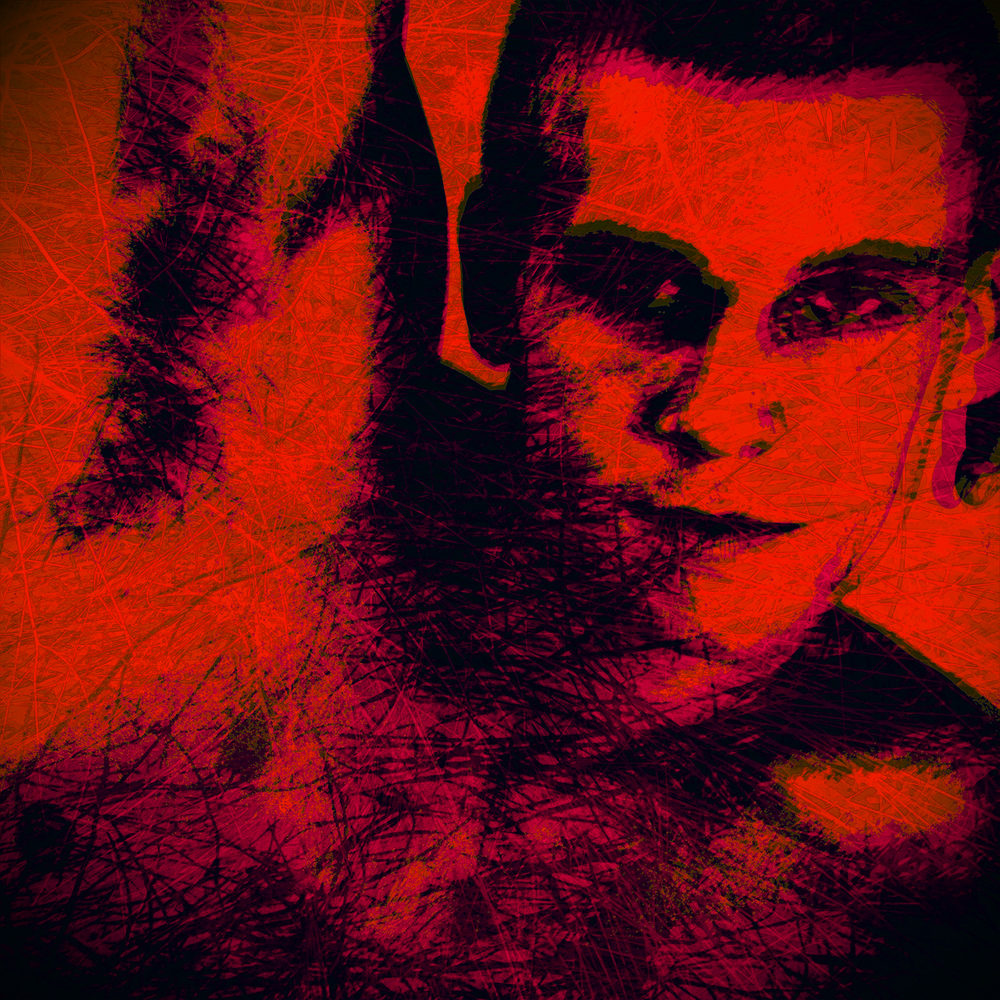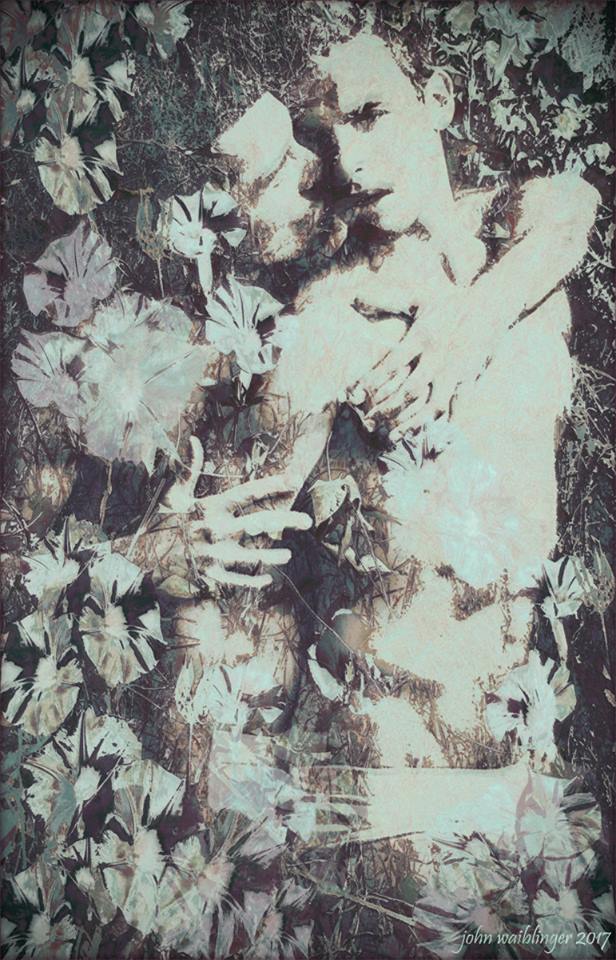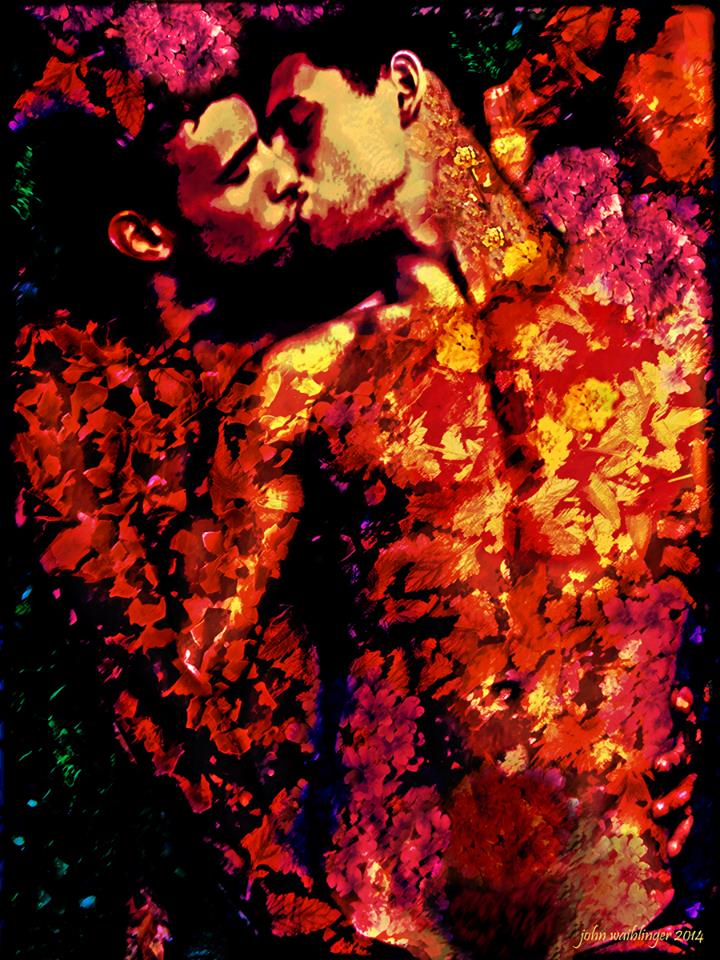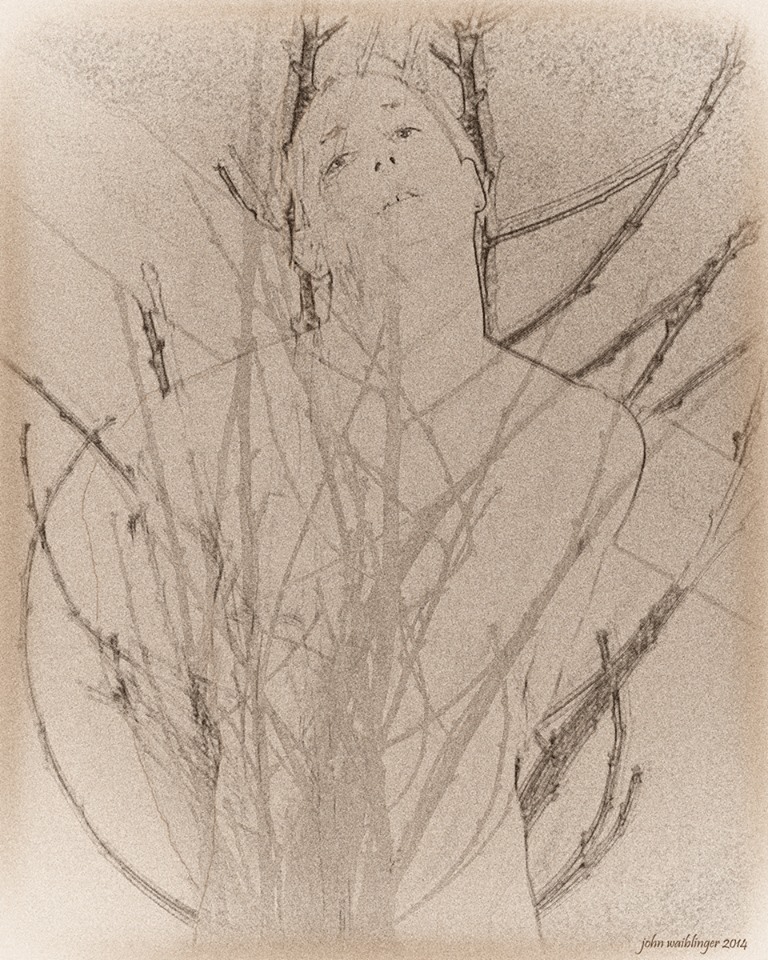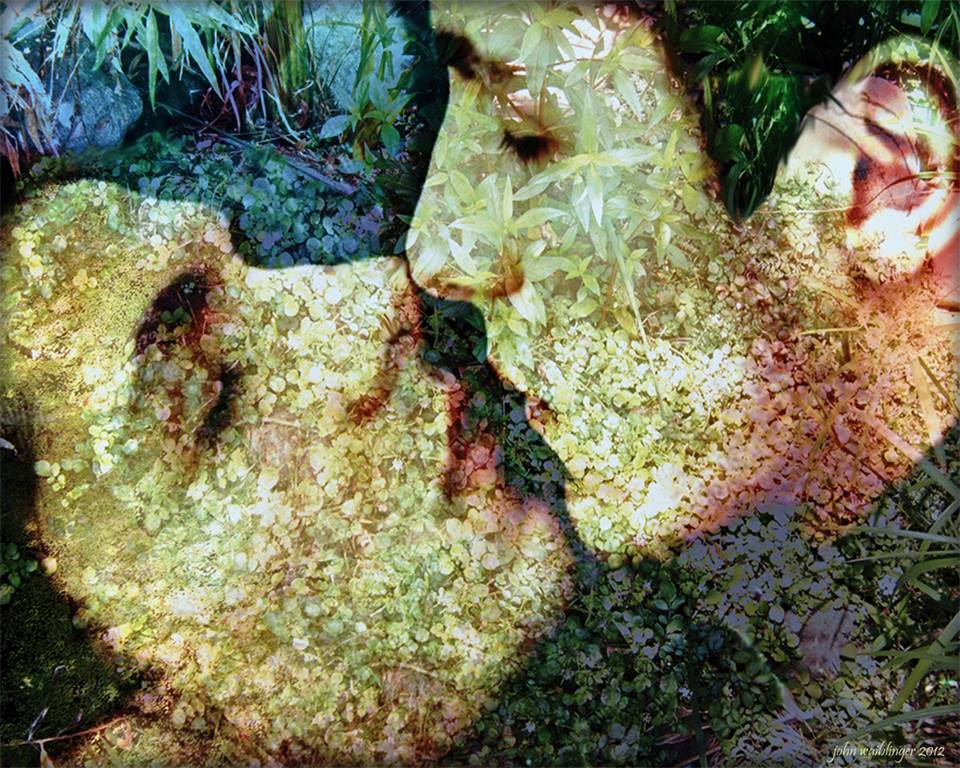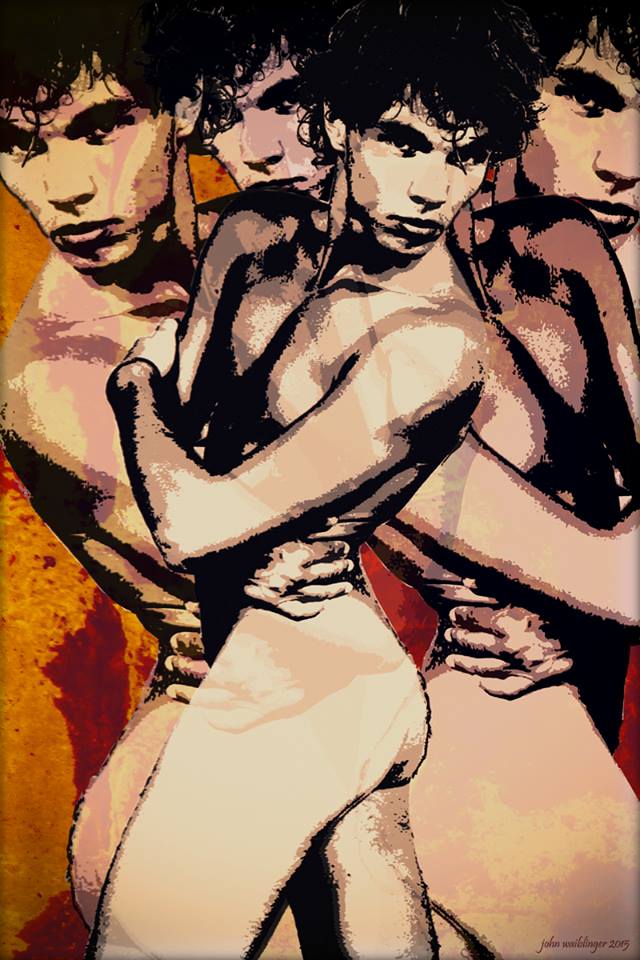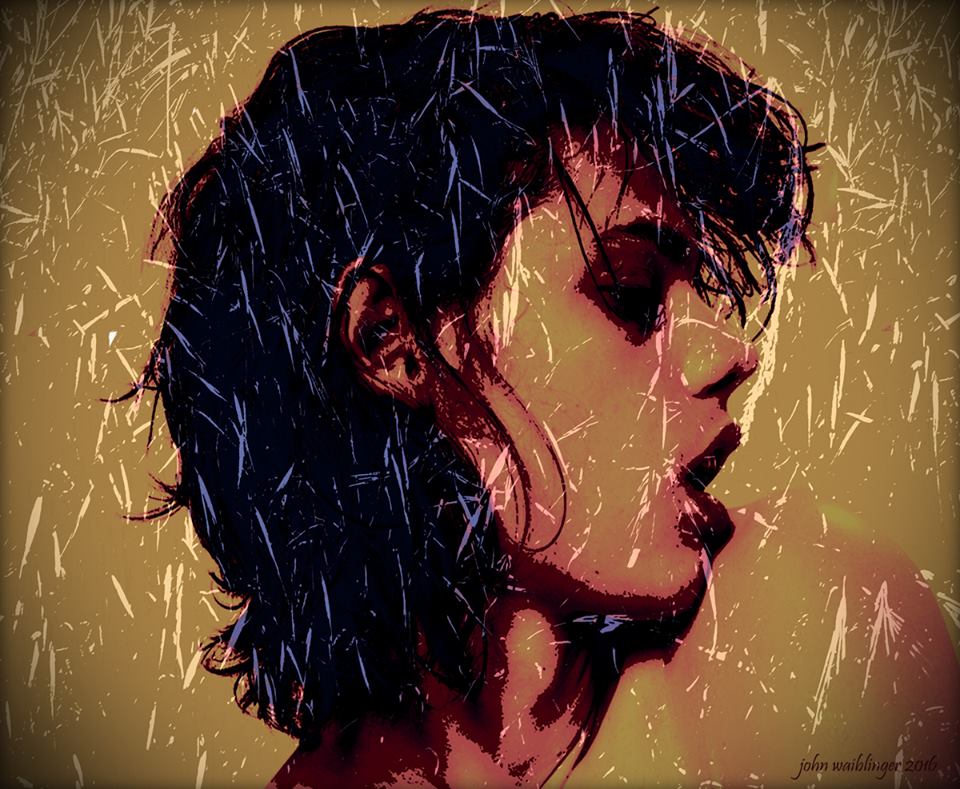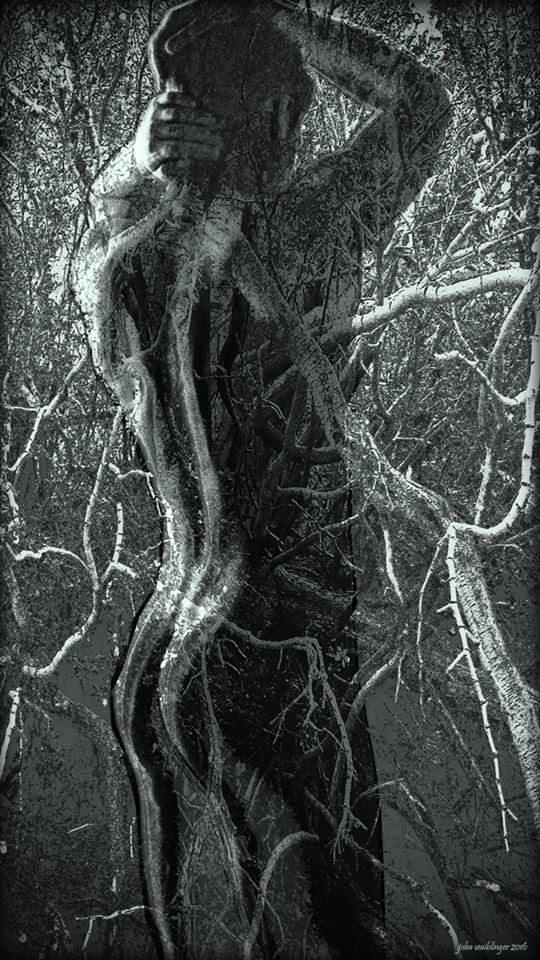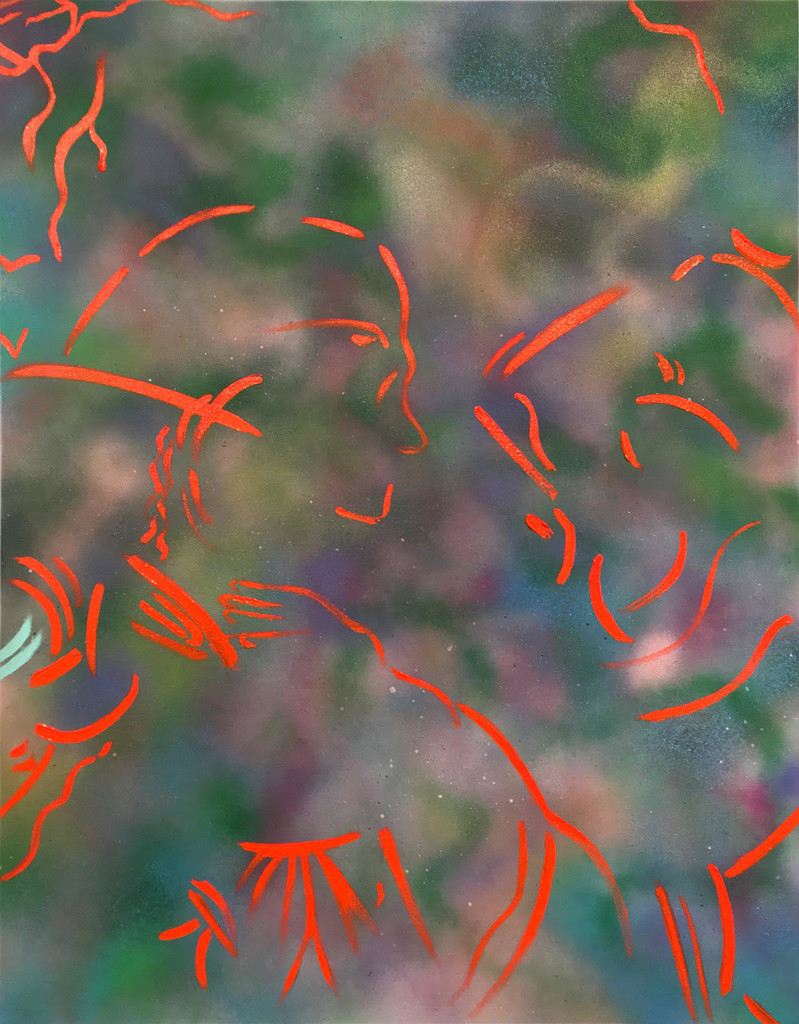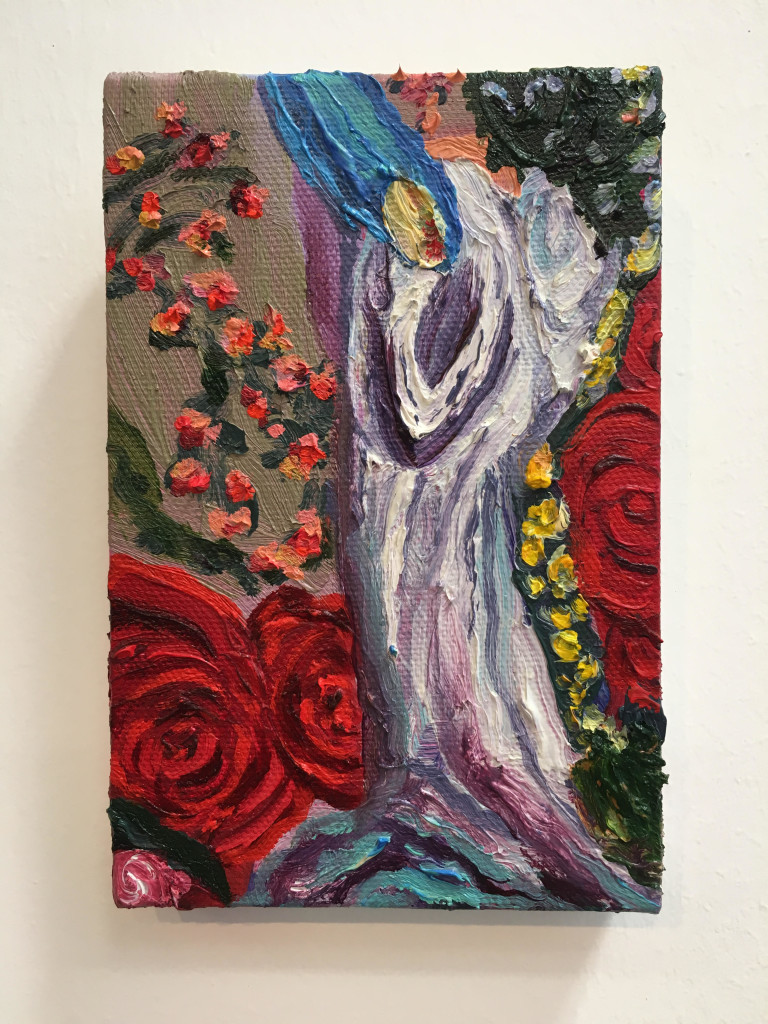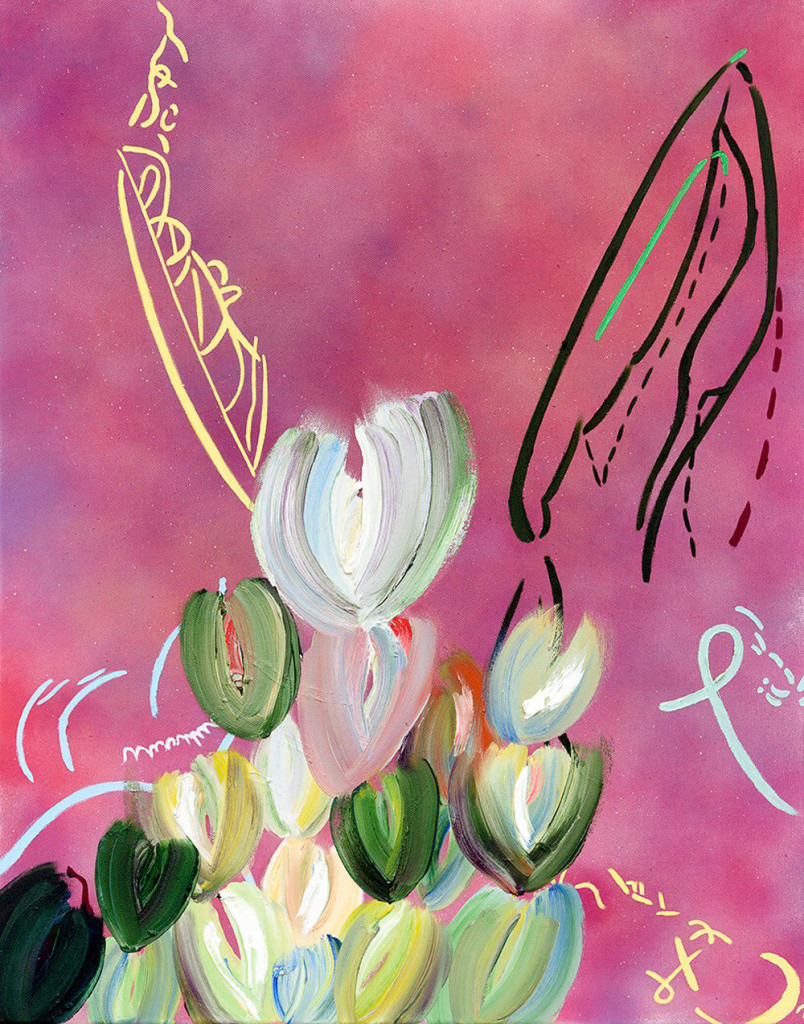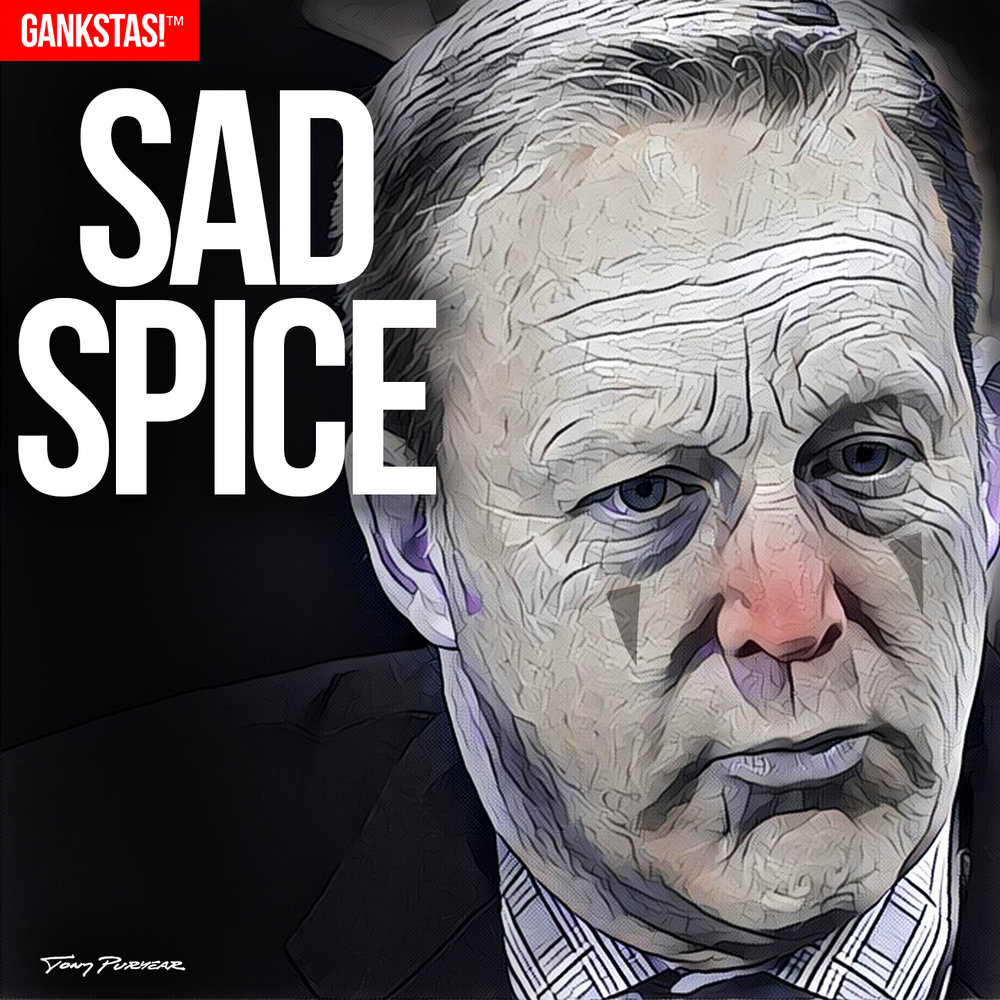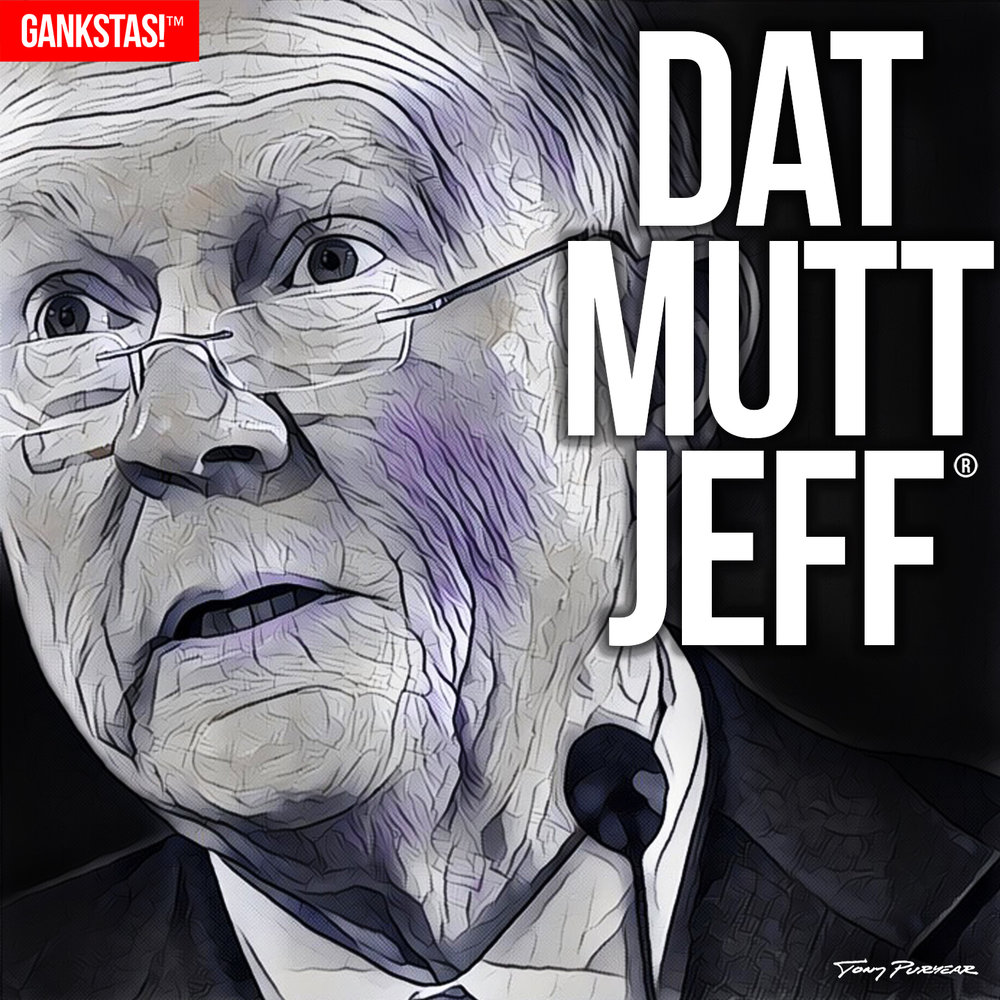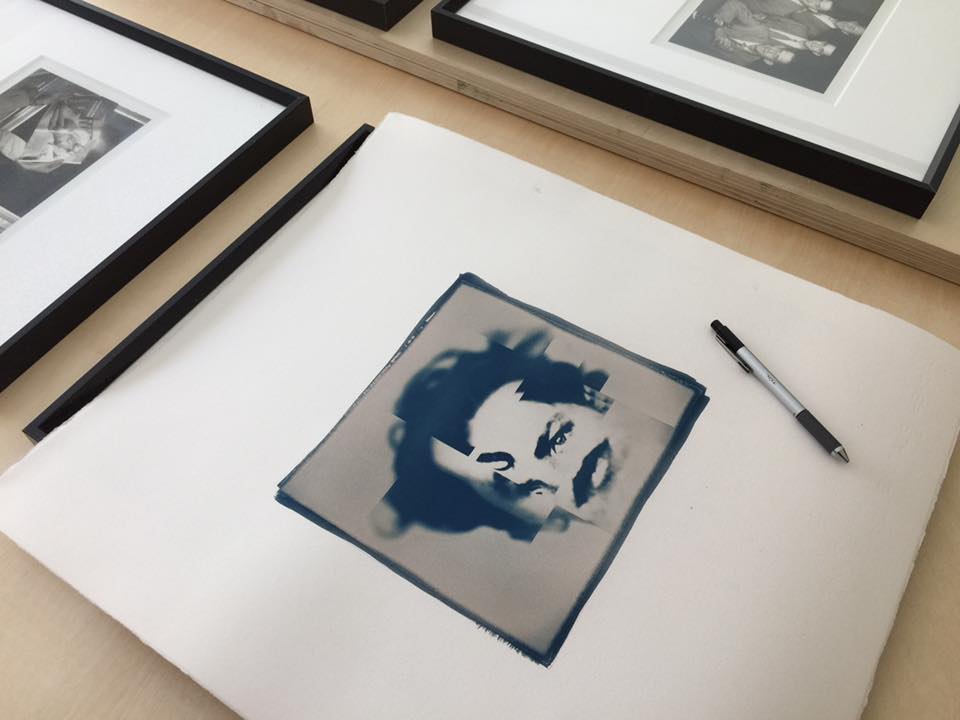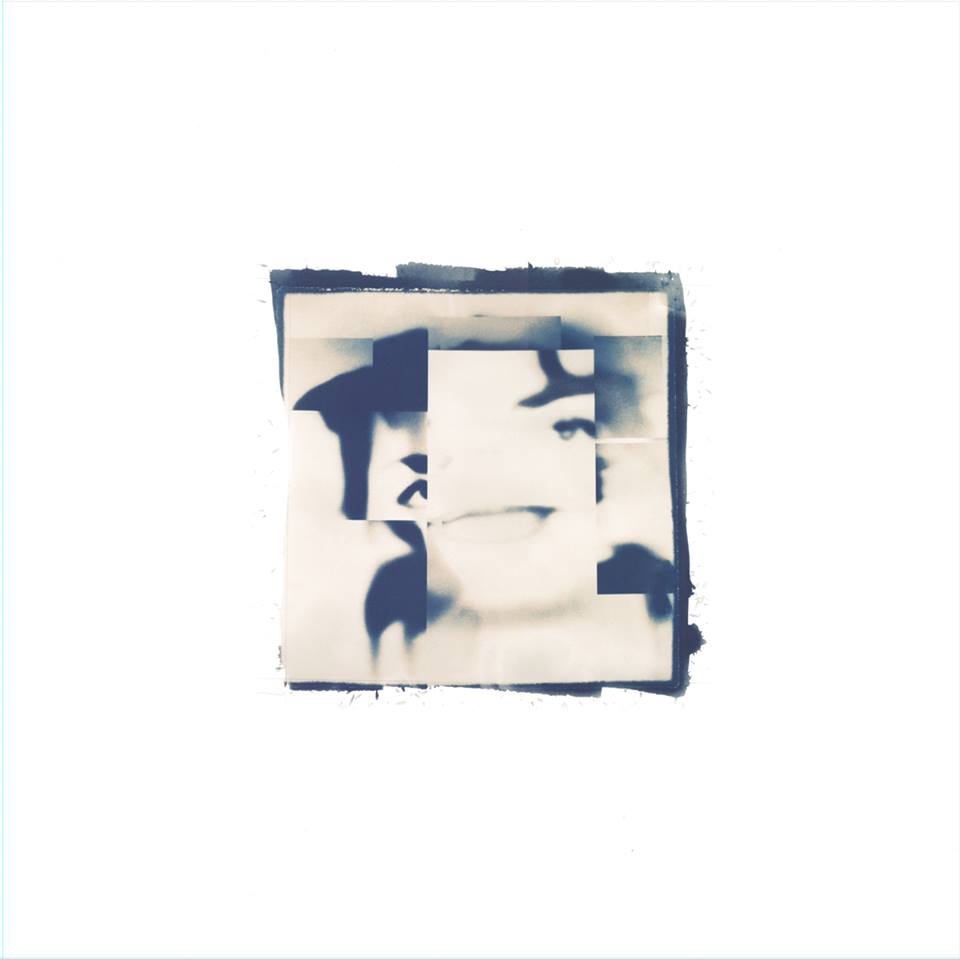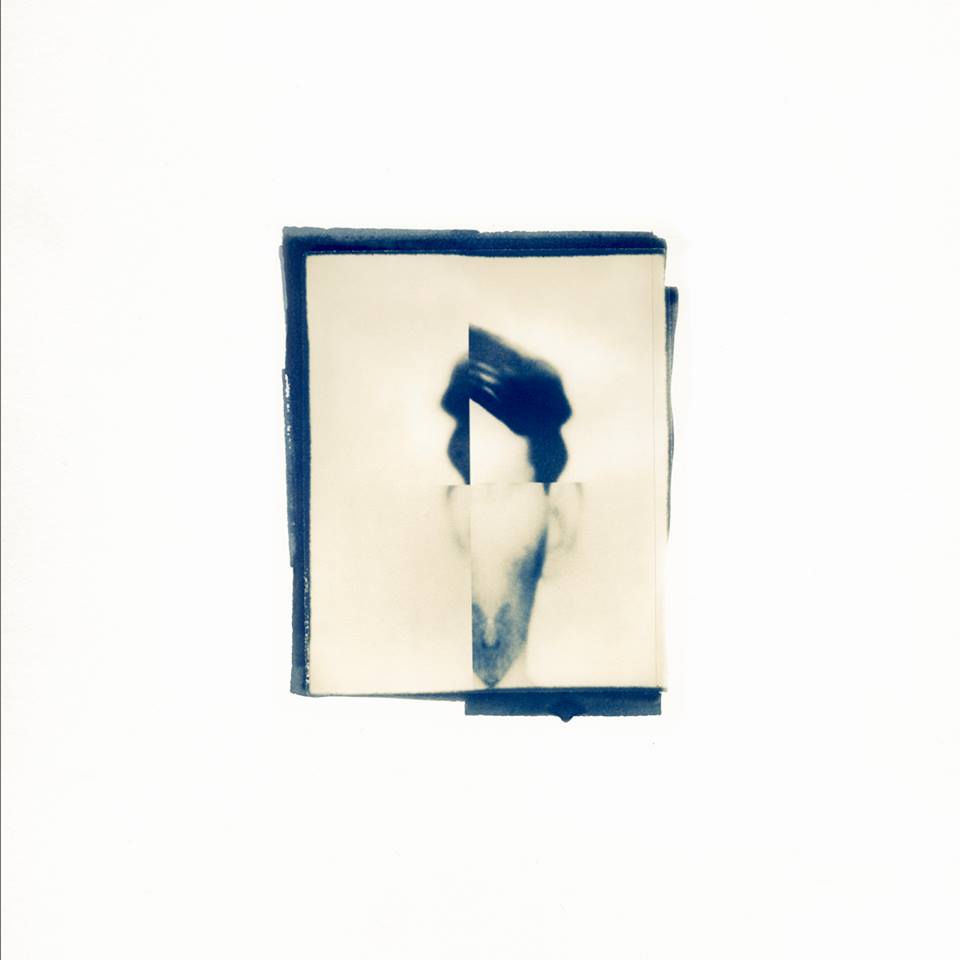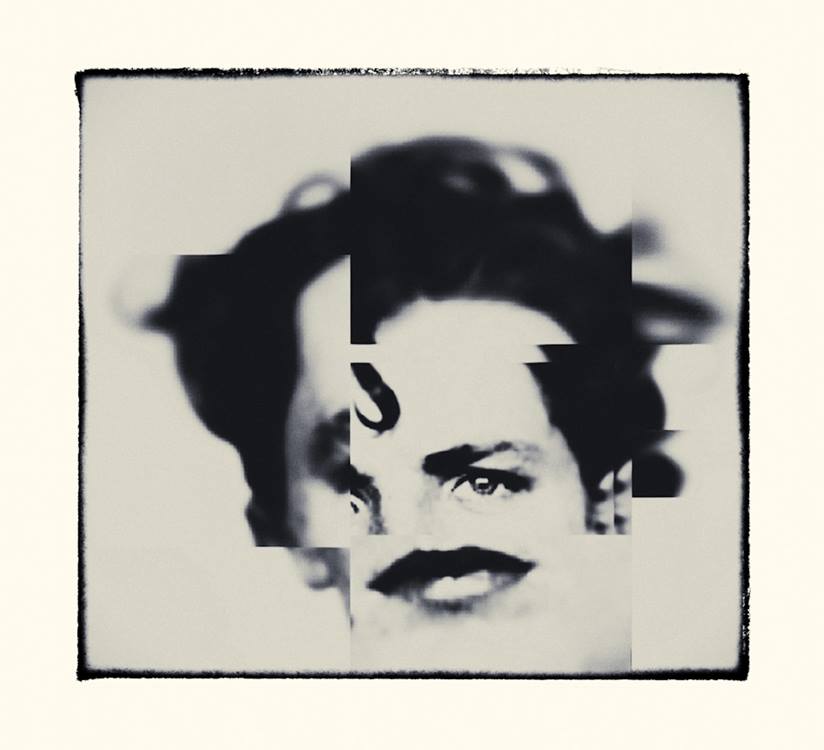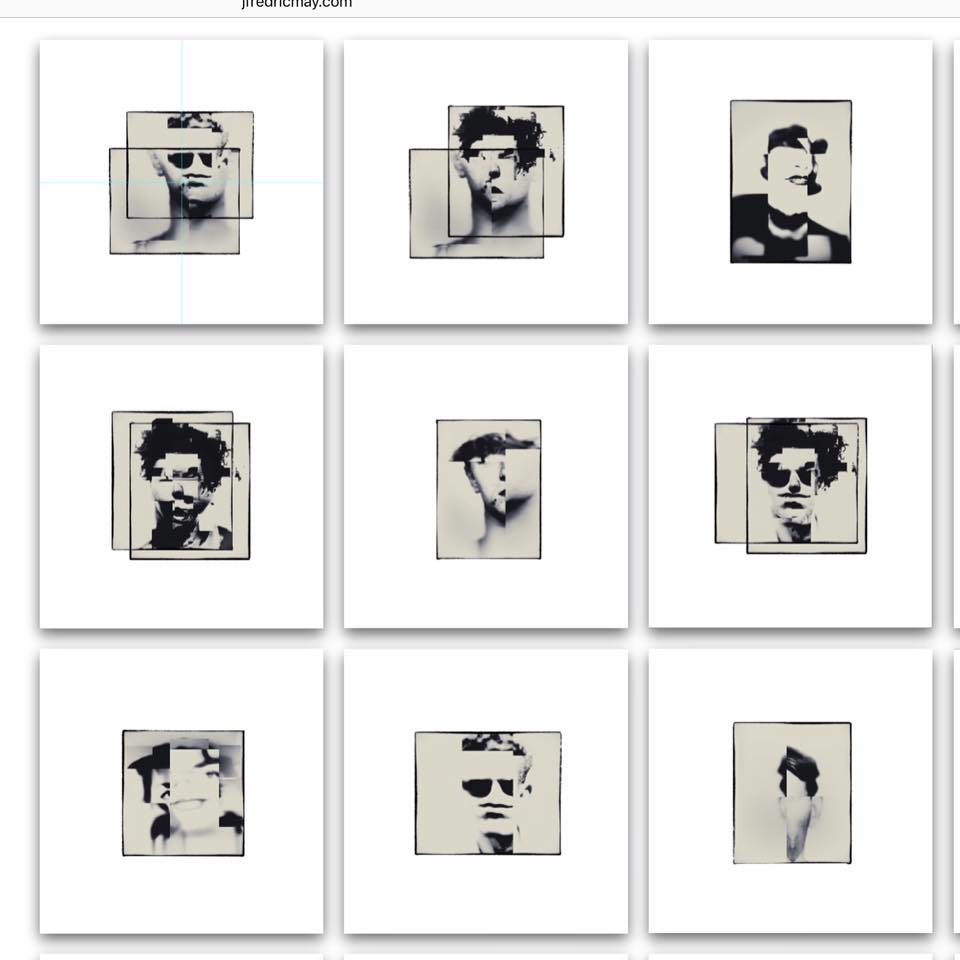John Waiblinger creates lushly tender images of male beauty, often in a romantic setting. His digital images are carefully manipulated to position the men in his works in an intimate way, combining the men with images of nature.
That intimacy is not always sexual or even overtly romantic, although many images do touch upon these themes. In “Mustang,” Waiblinger’s subject leans against the hood of the titular vehicle, for example. However, many of the male images are re-envisioned erotic models, collected from porn sites. “I’ve re-positioned them, re-imagined them in a different context, merging them with my own photographs as the basis for this re-visioning. So, each work is a layering and recombination of two very different images,” Waiblinger says.
Each piece is, the artist says, driven by emotion. The subjects grabbed his attention, touching his eye and his heart with their vulnerability, openness, and beauty.
“Each of these men or couples has touched me on both an emotional and aesthetic level …from a perspective other than raw sexuality, and I strive to communicate that vision in each piece.”
These men, who rely on their bodies for their work, are humanized in Waiblinger’s work, with their spirit and essence the refining factor. The artist notes that after all, each of these men live a life outside of any pornographic performance, and his poignant acknowledgement of their personal existence infuses the artist’s work.
“My engagement with these images encompasses many hours of re-thinking and re-imagining who these men might be and my own sense of relationship with them. Ultimately, I consider it an act of romance…” Waiblinger explains. In recognizing and accepting his own capability of objectifying these subjects, he has thoroughly engaged with them, viewing as total beings, rather than in a highly sexualized and commoditized world.
The Los Angeles-based artist discovered his digital art making and photographic tools fairly recently, sharing his dreamlike visions of love and contemplation.
In “Holding Your Flower,” a kiss is discretely shadowed by red flowers and leaves, creating a lush blanket enfolding two lovers; while in the spare “J’Accuse,” a man looks out longingly from behind a thicket of branches – arms clasped behind his back, he appears as a prisoner of his own thoughts and heart, or held in place by his own, perhaps unacknowledged, sexuality.
“Kiss,” like “Holding Your Flower,” and the morning glories in “Morning Glory,” overlays the features of two men, here in close-up, about to kiss, with delicate, mosaic-like images of flora and fauna.
The colors evoke stained glass, the patterns elaborate tile or beadwork, embroidering something eternal and universally recognizable as it weaves across the central image of the two lovers.
In “Movement,” multiple, overlapping images of a nude man are caught in motion, as if he were dancing or about to dance; “Rockstar” distresses its central image of a young, Mick Jagger-like man in profile with scratches that look like fireworks, stage-light glitter, or a dazzling rain. The scratches also evoke marks on a worn LP, or graffiti, creating a perfect urban image.
“Rooted” obscures this black and white image of a nude man, back turned to the viewer, with the branches of pale trees, almost fusing his spine to the branches.
“Bad Boys #1” offers two young men, fully clothed, looking as if they had stepped out of a 70s era Tom Petty video, the back drop a fiery red that is aflame with life, youth, and possibility.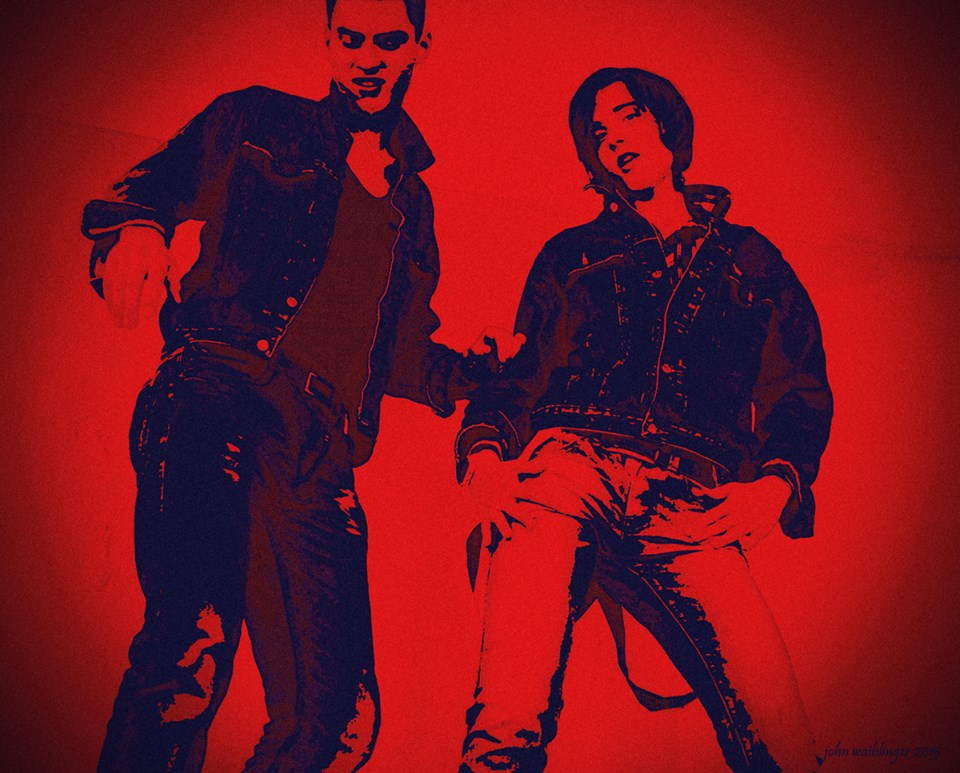
There is a mystical and mythical quality to these works, they are both fantasies and dreamy guides to an intrinsic truth: that human beauty is a part of life, abloom, growing, as wild, un-contained, and innocent as that.
Waiblinger, along with artist Sean Yang, will be presenting a one-week installation, “Journey,” in the display window vitrine at Cerritos College Art Gallery beginning March 19th, with a reception from 4 -6 p.m. The work here narrates the “coming out” process from both artists’ personal experience, and focuses on their longing for tender connections and the journey of fully-realized sexual identity.



